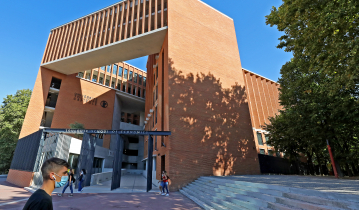Kun LI will defend his thesis on Essays on Productivity and Distortions;" on Wednesday, 28th September at 4pm, Room MF 323. (Supervisor: Christian HELLWIG, TSE Researcher)
Members are:
- Pierre DUBOIS, TSE researcher, University of Toulouse Capitole
- Franck PORTIER, TSE researcher, University of Toulouse Capitole
- Marti MESTIERI, Professeur, Northwestern University
- Thomas CHANEY, Sciences Po, Paris
Abstract
In the first chapter, I develop a new framework for analyzing the direct and indirect effects of privatization on productivity and distortion. To do so, I propose a novel method to jointly estimate distortions, productivity and production function parameters. I then apply the method to Chinese National Bureau of Statistics (NBS) industrial annual surveys from 1998 to 2007. I find that when a firm is privatized, it immediately realizes a 5% increase in productivity, which is equivalent to one year of productivity growth for an average manufacturing firm in the sample. Coupled with the estimated persistent productivity process, overall privatization increases privatized firms' productivity about 14% at 2007. Meanwhile, privatization reduces distortions by 2%. Privatization directly contributes 5% in the aggregate productivity growth in the sample, mainly through its impact on firm productivity. In contrast, the gains from improved factor reallocation due to privatization appear to have limited effects on firm revenues and aggregate TFP.
In the second chapter, together with Michael Peters and Steven Xu, we explain how a directed search model can be used to understand worker transition data in labor markets. The basic theory provides a dynamic extension of the model in Peters (2010) in which workers have privately known types that are observable to firms once workers apply. It shows how the wage offer distribution, the accepted wage distribution and the search outcome distribution are connected by the equilibrium structure of the model. This relationship is used to study transitions between jobs. The paper then illustrates how to use the results to test the validity of directed search models by using transition data from French matched employee-employer dataset (DADS). We find markets for workers with skillfulness fit better of what our theory model tries to tell. Moreover, we show misallocation of talents incurred by information asymmetry as in our model could be a major cause for efficiency loss.
In the third chapter, with Bruno Biais and Augustin Landier, we test the null hypothesis that the number of citations provides an unbiased measure of an article’s scientific value. To do so, we exploit a shock that is exogenous to the scientific value of a paper, namely the ending time of editorial appointments of colleagues of a paper’s author(s). During the course of an editor’s appointment, the citation rates of her papers in the journal she edits go up by 23 percentage points. During the same period, these articles don’t have any significant citation premium at other journals. The citation premium fades away when the editor steps down. The same phenomenon applies to colleagues of the editor. This provides a counterexample to the null hypothesis that is both large in size and in the population of papers that is affected.



